Anise hyssop and other mint family favorites
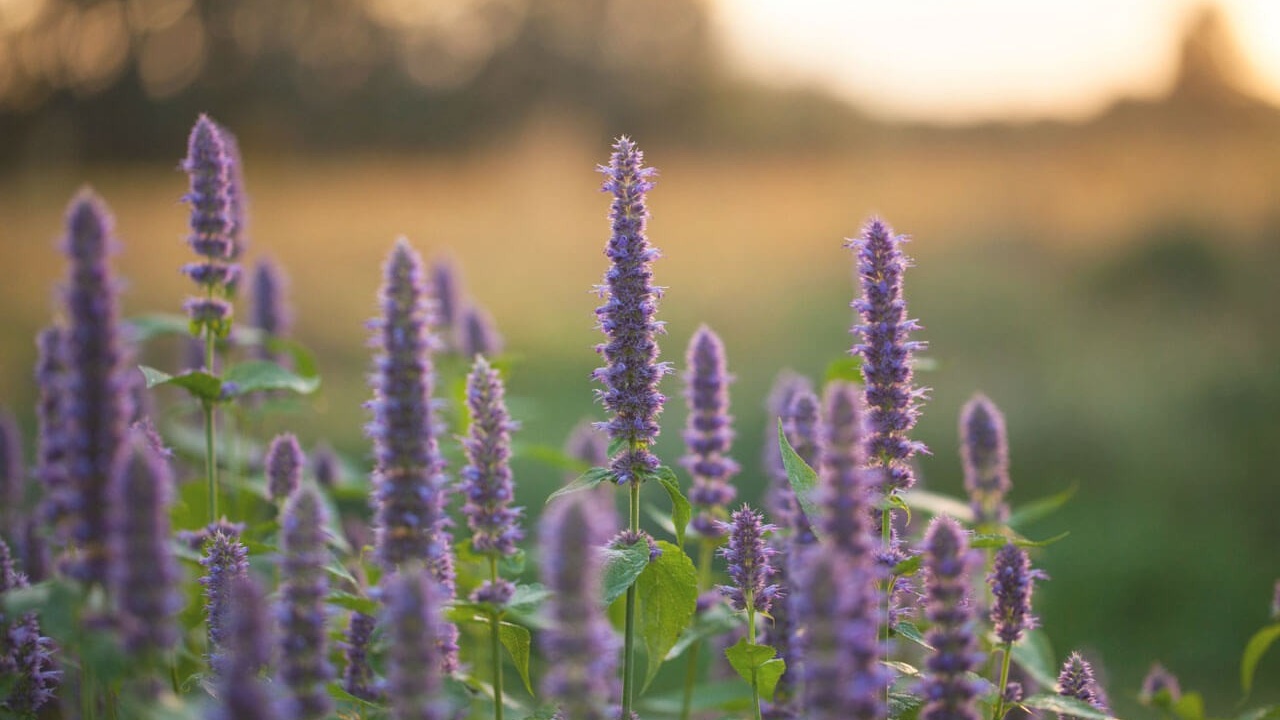
by Corinna Wood
While all plants in the mint family are considered edible, I daresay that anise hyssop is the most delectable.
I wish I could insert a “scratch and sniff” here . . one fragrant whiff of her sweetness, and you would swoon!
In summertime, the purple double-lipped flowers of anise hyssop are glorious. As one of the herbs in the mint family, she has the characteristic square stem with opposite leaves.
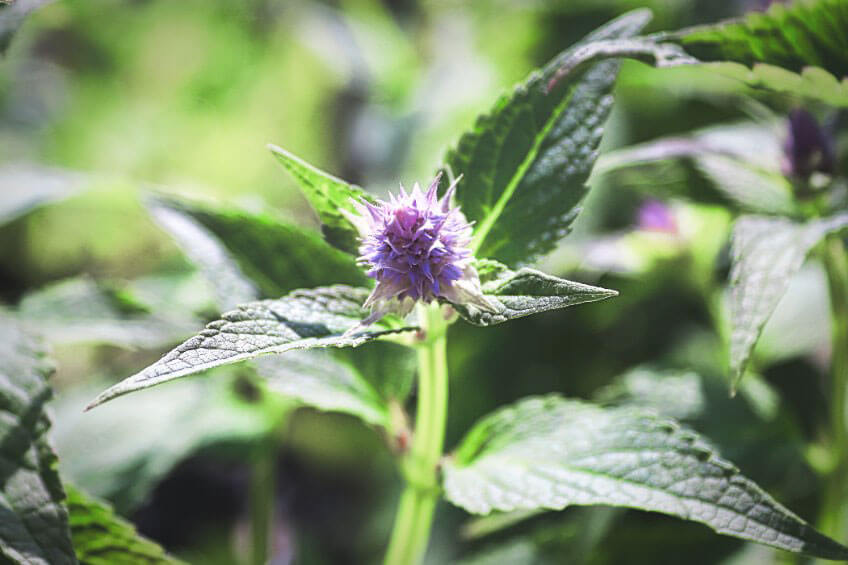 In my family, we love to pick a leaf for visitors to taste and wait for their exclamation of surprise that an herb can be so delicious! As the name suggests, anise hyssop’s leaves are aromatic, with the sweet flavor of anise.
In my family, we love to pick a leaf for visitors to taste and wait for their exclamation of surprise that an herb can be so delicious! As the name suggests, anise hyssop’s leaves are aromatic, with the sweet flavor of anise.
To be clear, this is neither star anise (Illicium verum) of the Schisandra family, nor hyssop (Hyssopus officinalis) of the mint family.
Anise hyssop (Agastache foeniculum) is a beloved ornamental pollinator plant and a medicinal mint in her own right. The root of the species name, foeniculum, means fennel. Although botanically unrelated, fennel also has a taste similar to anise.
Table of contents
Anise hyssop uses
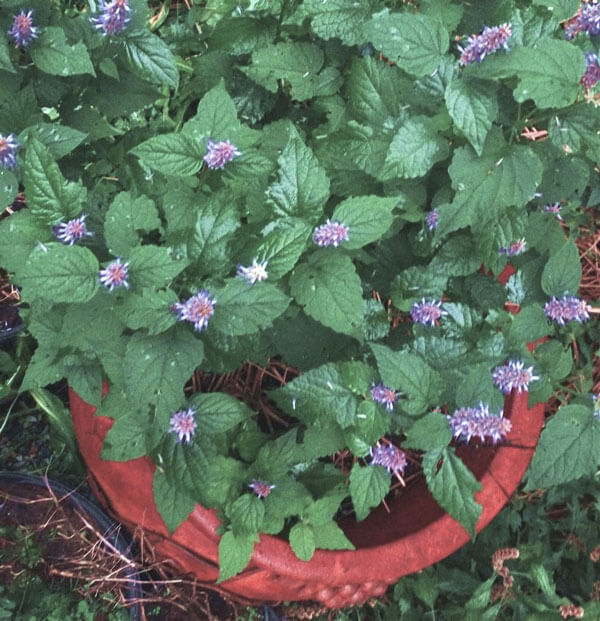 Beyond her intoxicating smell, what is anise hyssop used for?
Beyond her intoxicating smell, what is anise hyssop used for?
Medicinally, anise hyssop uses include easing digestive upset, respiratory system support, coughs, colds, and flus.
Administering her medicine is as simple as making tea!
Her aroma comes from the essential oils in the interstitial fluid between the cell walls.
This means her essential oils come out readily and are easily extracted in teas—unlike most water-based herbal extractions, which require a 4-8 hour brewing time to make a full-strength infusion.
So I love a cup of anise hyssop tea to soothe frayed nerves or an upset stomach.
Yet I must admit my favorite use is still to simply savor the fresh medicine of her smell and flavor. It lifts your spirit, calming and grounding you.
Plants in the mint family
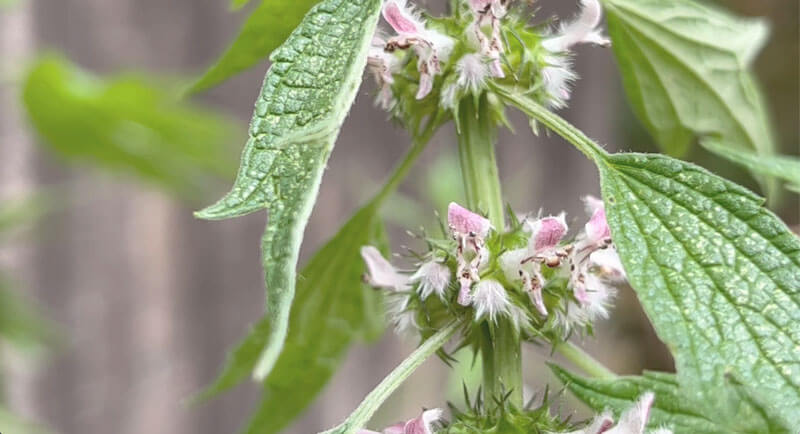
A key family for herbalists to know, the mint family is also known as Lamiaceae, formerly called Labiatae (still my preferred term, referring to her double-lipped flowers!).
Why bother figuring out the family?
Ah, yes. For starters, once you positively identify a plant as being in the mint family, you know that—at least in reasonable quantities—it is edible!
The key characteristics in identifying a member of the mint family are:
- Square-shaped stem
- Opposite leaves—directly across from each other, in pairs on the stem
- Double lipped flower, with an upper and lower "lip"
Anise hyssop has many “cousins” in the mint family including peppermint, spearmint and applemint as well beloved culinary herbs such as oregano, thyme, basil, marjoram and sage.
Among the medicinal mint family members, my herbal allies include motherwort, skullcap, tulsi and lemon balm.
There’s also lavender, catnip and rosemary—plants in the mint family that have both aromatic and medicinal qualities.
Still, if I had to choose, anise hyssop is my favorite to eat fresh from the garden.
Anise hyssop—a family favorite
When I see anise hyssop blooming, I often think of my son because he's so fond of this sweet plant.
As a little boy helping me with herbal medicine harvests, he began wrapping anise hyssop leaves around peppermint and lemon balm leaves for a fresh herbal treat.
Still a family favorite, his hand instinctively reaches for anise hyssop leaves while we chat near the garden.
 It's hard to believe he's now grown into a young man, red curls towering over me.
It's hard to believe he's now grown into a young man, red curls towering over me.
After 12 years of homeschooling, he graduated with a high school diploma fulfilling all the state requirements—including the last few years of dual enrollment at a local college.
We had our own graduation ceremony on the porch to mark the occasion.
I gotta say, after celebrating his accomplishments, I found myself wanting to recognize my own journey that culminated in his graduation!
I imagined donning the cap and gown myself to celebrate my dozen years administrating this homeschool, as a single mother supermom running a green business supporting my family.
What we women accomplish!
After my son's father left, it quickly dawned on me that single mothers everywhere are astounding.
A daughter to a single mother myself, I felt the impulse to bow down in homage to the challenges they face and overcome every day.
Ah, the strength and perseverance it takes to believe in ourselves . . .
Amidst the overwhelm, I've always found times of solace in nature and the plants.
As I gaze at the garden today, I’m grateful that my anise hyssop now comes back year after year. It took time to feel out the spots where she would be happiest, in a mix of partial shade as well as sun.
Three medicinal types of mints to know and love
Three plants in the mint family have a special place in my heart, my garden and my wise woman herbal medicine chest. All of the herbs in this trio reach their peak potency for harvest in midsummer.
Let me introduce you to these special friends of mine, in hopes that one or more may find a place within your own family favorites among the various types of mints.

Lemon Balm
Widely known as a calmative and mood elevator, lemon balm (Melissa officinalis) always seems to give me a lift.
If you have access to fresh lemon balm, just rub one of her lovely leaves and inhale deeply. You’ll feel the calming effects of her lemon scented aroma immediately.
You can also add lemon balm to teas and cold infusions simply for the pleasant taste and as a way to ease anxiety and soothe stress.

Holy Basil (aka Tulsi)
Holy basil (Ocimum tenuiflorum) is another beloved herb in the mint family.
As an adaptogen, tulsi helps you and your body adapt to stress. You can receive tulsi's medicinal benefits by brewing teas or infusions with the fresh or dried herb.
Extract tulsi for your medicine chest with an alcohol-based tincture. Or use your fresh holy basil leaves and stalks in pesto—or anywhere else you'd use basil into your kitchen—for food as medicine.
I've even been known to add some of her leaves into a warm bath, or fall asleep with a bit of aromatic tulsi tucked under my eye mask or pillow.

Motherwort
Unlike most mints, motherwort is not aromatic. What she lacks in aroma she makes up for tenfold in medicine.
Motherwort (Leonurus cardiaca) is a powerhouse for women’s health. Motherwort tincture benefits the heart, the circulatory system and supports women of all ages—menstruating, menopausal, and post-menopausal.
She’s a fast-acting herbal ally that’s easy to identify in the wild or to cultivate in your garden.
As you know, it's essential to positively identify any plants you're harvesting for food or medicine. First things first: Grab my free guide on 3 Poisonous Plants to Watch Out For (pdf) so you can stay safe on your herbal adventures.
Making marvelous herbal coolers with mint family plants
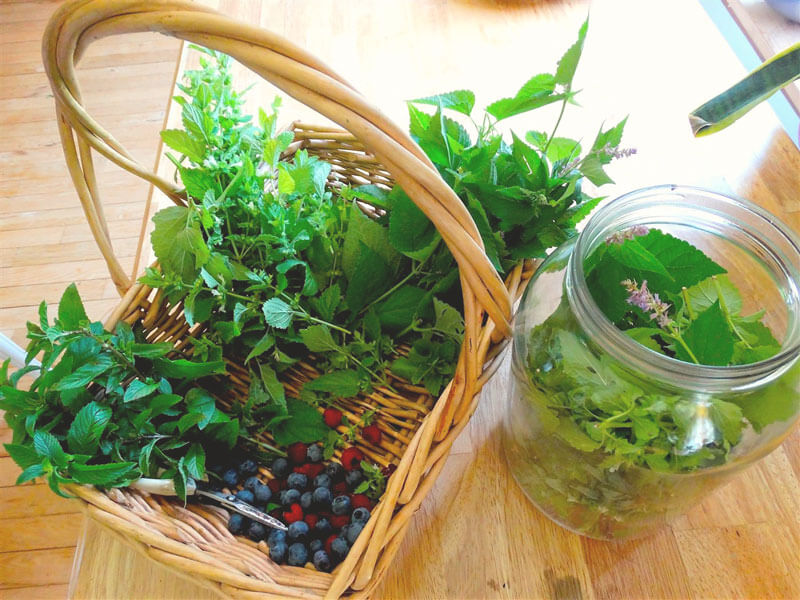 While I do sometimes still reach for a tall glass of water on a sunny day, I've found that drinking plain water can actually leave me thirsty, especially in the heat of the summer.
While I do sometimes still reach for a tall glass of water on a sunny day, I've found that drinking plain water can actually leave me thirsty, especially in the heat of the summer.
I have come to understand that when we drink mineral-rich herbal infusions or other nutrient-dense liquids, our bodies can more effectively absorb the water and quench our thirst.
In the summer, I especially love to turn to quick and easy teas with the mint family plants that I have growing outside my door (dried herbs work too).
Plants in the mint family extract well with just a short brewing time because they impart their aromatic properties easily into water. Just like anise hyssop, their essential oils are stored between the cell walls of the plant so there is no need to brew it for a long time.
Or you could even skip the hot water step and just grab a sprig on your way out the door to pop in your bottle of water—you’ll still get some of the medicinal benefits.
Here's my favorite recipe for an herbal refresher for staying cool, calm, and collected in the midsummer.
Recipe ~ Hydrating Summer Cooler
with Herbs in the Mint Family
 Gather your ingredients
Gather your ingredients
- A large handful of one or more of your favorite fresh (or dried) mint family herbs—anise hyssop, peppermint, lemon balm, mountain mint, tulsi, or catnip
- Water, brought to a boil
- For extra hydration, add any or all of these:
- a squeeze of lemon juice
- a spoonful of raw honey
- a pinch of sea salt
Just follow these easy steps
- Place your herbs into a jar.
- Pour boiling water over the fresh herb and cover with a lid or small plate.
- Let steep for 5-10 minutes.
- Refrigerate or pour over ice for a cool and refreshing herbal tea.
- For even more hydration packed with electrolytes and nutrients, add lemon juice, honey and/or sea salt.
Remember, these aromatic mints always happy to help you stay hydrated. So let's drink up!~
Mint family favorites to bring into your life
 Which mint family favorites do you want to bring into your life?
Which mint family favorites do you want to bring into your life?
Plants in the mint family are among the most common and most easily identified herbs with their square stems, opposite leaves and double-lipped flowers.
The star-studded mint family includes typical culinary favorites such as thyme, rosemary, sage and oregano.
And the heavy lifting medicinals: motherwort, tulsi, and lemon balm.
As well as all the lovely aromatics in between—like peppermint and anise hyssop.
I know, for those of us who love the green and growing things, it's hard to choose . . .
My personal favorite? While all plants in the mint family are edible, to me, anise hyssop is surely the most delectable!
____________
If you found this article helpful, spread the wise woman ways by sharing with your friends and tap the button below~
Comments ~ what stands out for you today?







